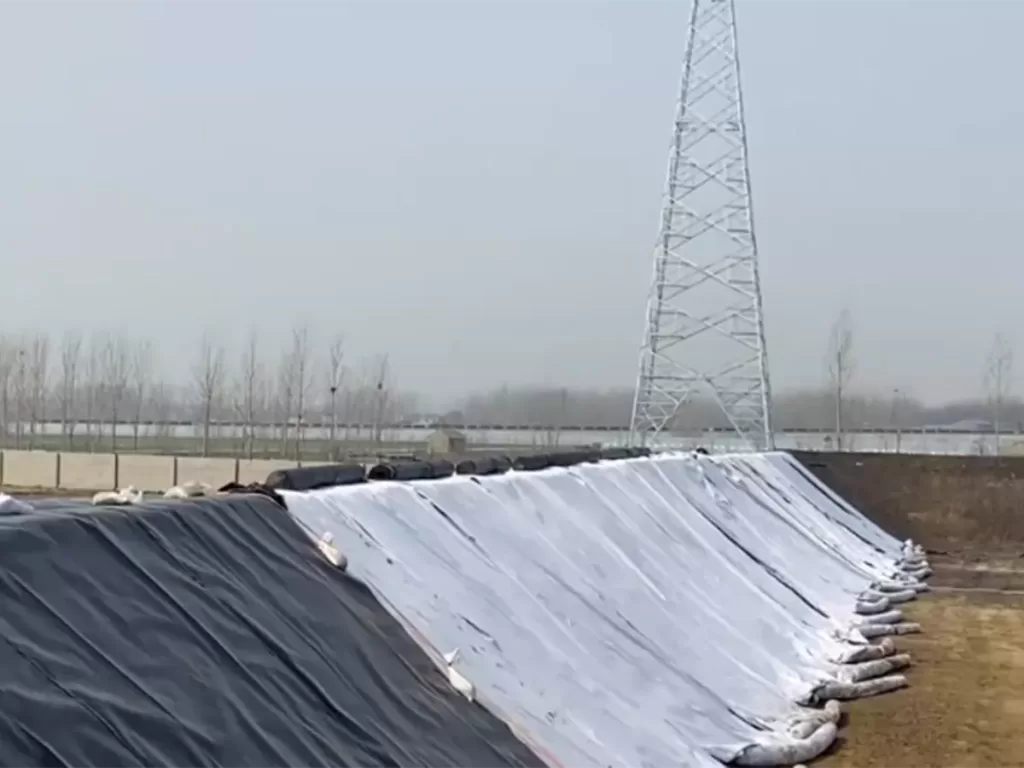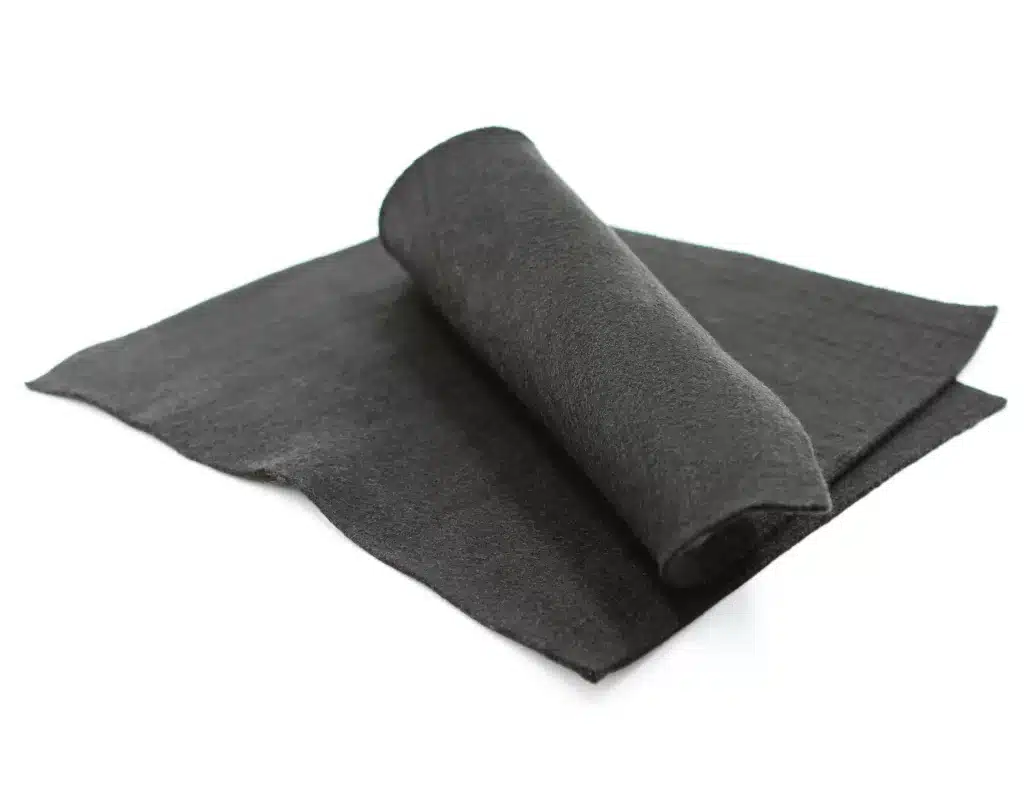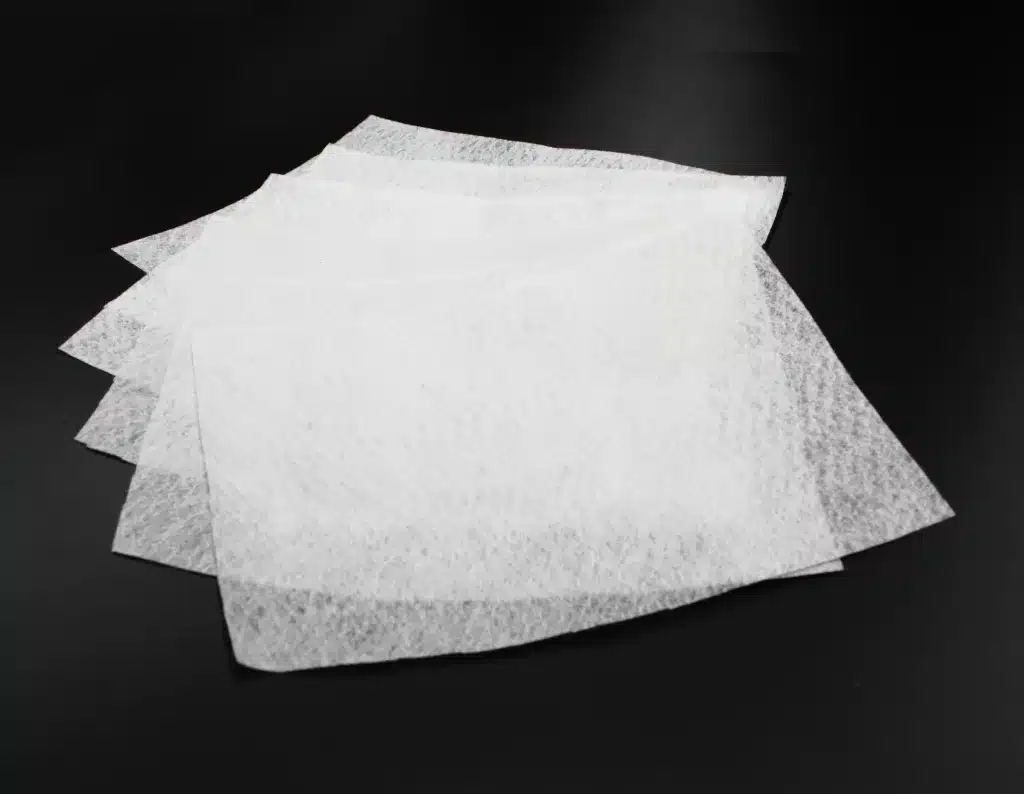+86-159 9860 6917
info@geofantex.com
geofantex@gmail.com
+86-400-8266163-44899
Geotextile filter fabric plays a crucial role in enhancing the durability and performance of retaining walls. This article explores its importance, uses, and differences from other types of fabrics commonly used in construction projects.

Can geotextile be used in retaining walls?
Yes, geotextile fabric can be used in retaining walls, and it serves multiple functions in this application. Here’s how it can help:
- Separation: Geotextiles act as a separator between different soil layers, preventing the mixing of the backfill material with the underlying soil. This helps maintain the structural integrity of the retaining wall and ensures better drainage.
- Drainage: When used behind a retaining wall, geotextile fabric aids in the drainage of water, which is crucial for preventing water buildup behind the wall. It allows water to pass through while filtering out fine particles that might clog drainage systems.
- Reinforcement: Geotextiles can provide additional strength to the soil structure, improving the overall stability of the retaining wall. It helps distribute loads and reduce the risk of soil erosion.
- Protection: Geotextiles protect the retaining wall from internal erosion and reduce the pressure exerted by the retained soil, improving the wall’s longevity.
In summary, using geotextile fabric in retaining walls enhances drainage, separation, and reinforcement, ultimately improving the wall’s durability and effectiveness.
What kind of fabric should I use behind a retaining wall?
When constructing a retaining wall, the choice of fabric behind it plays a vital role in ensuring proper drainage and preventing soil erosion. Here are some of the most suitable fabrics, along with their properties, advantages, and installation tips:
Non-Woven Geotextile Fabric
Non-woven geotextile fabrics are commonly used behind retaining walls because of their excellent drainage and filtration properties.
- Properties: Made from synthetic fibers that are bonded together mechanically, thermally, or chemically. Porous, allowing water to pass through while preventing soil particles from migrating.
- Advantages: Excellent for drainage, preventing hydrostatic pressure buildup behind the wall. Helps to reduce soil erosion. Flexible and easy to install.
- Installation Considerations: Should be laid with the fabric’s permeable side facing toward the soil. Ensure overlapping of edges by at least 12 inches to prevent soil intrusion.
- Recommended Thickness: 4 to 6 oz per square yard.
- Permeability: High permeability (up to 1,000 gallons per square foot per minute).
Woven Geotextile Fabric
Woven geotextile fabrics are made by interlacing synthetic fibers and are best used for heavier soil loads and structural stability.
- Properties: Stronger and more durable than non-woven fabrics. Limited permeability, which makes it more suitable for areas that don’t require high water flow.
- Advantages: Provides reinforcement and helps with soil stabilization. Suitable for areas where soil movement is a concern.
- Installation Considerations: Ensure that the fabric is placed properly to avoid soil compaction and ensure proper water drainage.
- Recommended Thickness: 8 to 10 oz per square yard.
- Permeability: Moderate permeability.
Drainage Fabric (Perforated Fabric)
Drainage fabrics are designed specifically for water filtration and drainage behind retaining walls.
- Properties: Often perforated or has mesh-like structures for enhanced drainage. Works well for areas with high moisture accumulation.
- Advantages: Superior drainage to reduce water buildup behind the wall. Helps to prevent damage to the retaining wall caused by water pressure.
- Installation Considerations: Properly place the drainage fabric along the length of the wall, ensuring it covers the area where water tends to accumulate. May require additional drainage pipes or gravel to optimize flow.
- Recommended Thickness: 6 oz to 8 oz per square yard.
- Permeability: Very high permeability, allowing easy water flow.
Synthetic Turf (Geo-Turf)
In certain situations, synthetic turf or geo-turf mats can be used behind retaining walls as an eco-friendly alternative.
- Properties: Made from synthetic grass-like materials that allow for soil protection and water filtration. Provides an aesthetic look in addition to practical drainage benefits.
- Advantages: Aesthetic appeal in landscaping applications. Helps with erosion control while still allowing water to filter through.
- Installation Considerations: Best suited for decorative retaining walls or green-wall projects. Requires maintenance to ensure it doesn’t become clogged with debris.
- Recommended Thickness: Similar to woven or non-woven fabrics (4 to 6 oz per square yard).
- Permeability: Moderate to high permeability.
Key Considerations for Installation:
- Thickness: Choose the appropriate thickness based on the soil conditions and the height of the retaining wall. Generally, 4-10 oz per square yard is sufficient.
- Permeability: For retaining walls, high permeability is crucial for proper drainage. Ensure that the fabric allows water to flow through without allowing fine particles to pass.
- Overlap: Always overlap fabric edges to avoid soil migration behind the wall.
- Silt Control: Use fabric that is capable of filtering fine particles to prevent clogging and ensure long-term drainage efficiency.
By carefully choosing and installing the appropriate fabric behind your retaining wall, you can improve its structural integrity, longevity, and performance.
How to use geotextile fabric for retaining walls?
Using geotextile fabric for retaining walls is an effective way to improve stability, facilitate drainage, and prevent soil erosion. Below is a detailed guide to help you understand the process:
Types of Geotextile Materials
- Woven Geotextiles: Provide high tensile strength and are suitable for heavy loads and reinforcement.
- Non-Woven Geotextiles: Effective for filtration and drainage due to their permeability.
- Composite Geotextiles: Combine properties of both woven and non-woven for specialized applications.
Key Properties of Geotextiles
- Permeability: Allows water to pass while retaining soil.
- Durability: Resistant to environmental degradation.
- Tensile Strength: Supports soil structure and loads.
- Chemical Resistance: Withstands exposure to varied soil compositions.
Enhancing Stability and Drainage
- Geotextile fabrics help distribute load pressure evenly, reducing soil movement.
- They facilitate water flow, preventing hydrostatic pressure build-up behind the wall.
Installation Techniques
Prepare the Retaining Wall Base:
- Excavate the site and level the base.
- Lay a compacted layer of gravel for drainage.
Place the Geotextile Fabric:
- Unroll the geotextile fabric along the excavation site.
- Ensure it covers the backfill area completely, with overlaps of at least 12 inches where pieces meet.
Add Drainage Pipes (if needed):
- Place perforated pipes at the base, wrapped in fabric, to direct water away from the wall.
Backfill and Secure the Fabric:
- Backfill the area with gravel or coarse soil.
- Fold the geotextile over the backfill layer, securing it to prevent displacement.
Construct the Retaining Wall:
- Build the wall in segments, ensuring proper compaction of backfill at every stage.
Best Practices
- Use staples or pins to anchor the geotextile fabric during installation.
- Avoid using sharp tools near the fabric to prevent tearing.
- Choose a geotextile with adequate strength for the expected load and soil conditions.
Challenges and Considerations
- Ensure compatibility between the geotextile and surrounding materials.
- Be mindful of UV degradation if the fabric is exposed for extended periods.
- Address potential clogging by using appropriate filters for finer soils.
Step-by-Step Example
- Step 1: Measure and cut the geotextile to fit the retaining wall dimensions.
- Step 2: Lay the fabric across the prepared trench.
- Step 3: Add a drainage layer and secure the pipe system if necessary.
- Step 4: Backfill incrementally, folding the fabric over each layer.
- Step 5: Build the wall, ensuring consistent compaction of soil.
This structured approach ensures durability and functionality of the retaining wall while minimizing future maintenance needs.
What is the difference between filter fabric and geotextile fabric?
Filter Fabric
Definition and Composition: Filter fabric is a type of synthetic material, often made of polyester or polypropylene, designed to allow water to pass through while retaining soil particles. It typically features fine openings for filtration.
Primary Uses
- Drainage systems to prevent soil clogging.
- Retaining walls to control soil migration.
- Erosion control projects where precise water filtration is necessary.
Advantages
- Effective in separating fine soil particles from water.
- Resistant to chemical and environmental degradation.
- High durability under varying loads and stresses.
Specific Characteristics: Filter fabrics often prioritize filtration properties over strength and separation capabilities. They are lightweight and tailored for water-based applications requiring particle separation.
Geotextile Fabric
Definition and Composition: Geotextile fabric is a broader category of engineered textiles made from synthetic materials like polypropylene or polyester. They are classified as either woven or non-woven, depending on their construction.
Primary Uses
- Soil reinforcement and stabilization.
- Road construction for load distribution.
- Preventing soil erosion on slopes and riverbanks.
Advantages
- High tensile strength in woven types for reinforcement.
- Excellent separation and drainage in non-woven varieties.
- Versatile in multiple geotechnical applications.
Specific Characteristics: Geotextile fabrics are designed to fulfill multiple functions: separation, filtration, reinforcement, drainage, and protection. They come in various strengths and porosities tailored to specific project needs.
Key Differences
| Aspect | Filter Fabric | Geotextile Fabric |
|---|---|---|
| Primary Function | Filtration of fine soil particles from water | Multifunctional: reinforcement, filtration, and drainage |
| Composition | Thin, synthetic material with fine pores | Broad range: woven or non-woven synthetic materials |
| Applications | Drainage systems, retaining walls | Road construction, erosion control, soil stabilization |
| Durability | High in filtration systems but limited in reinforcement | Stronger options available for heavy loads |
| Flexibility | More specific to filtration | Versatile, used across many applications |
Situational Preferences
- Use filter fabric for precise filtration needs, such as in drainage pipes or retaining walls.
- Use geotextile fabric for broader applications, including soil reinforcement, erosion control, and large-scale construction projects.
Geotextile filter fabric is indispensable for retaining walls due to its ability to enhance drainage, prevent soil erosion, and ensure long-term stability. Understanding its role and proper installation techniques can significantly improve the performance and lifespan of retaining wall structures.



Get Free Sample
We’ll respond as soon as possible(within 12 hours)






















